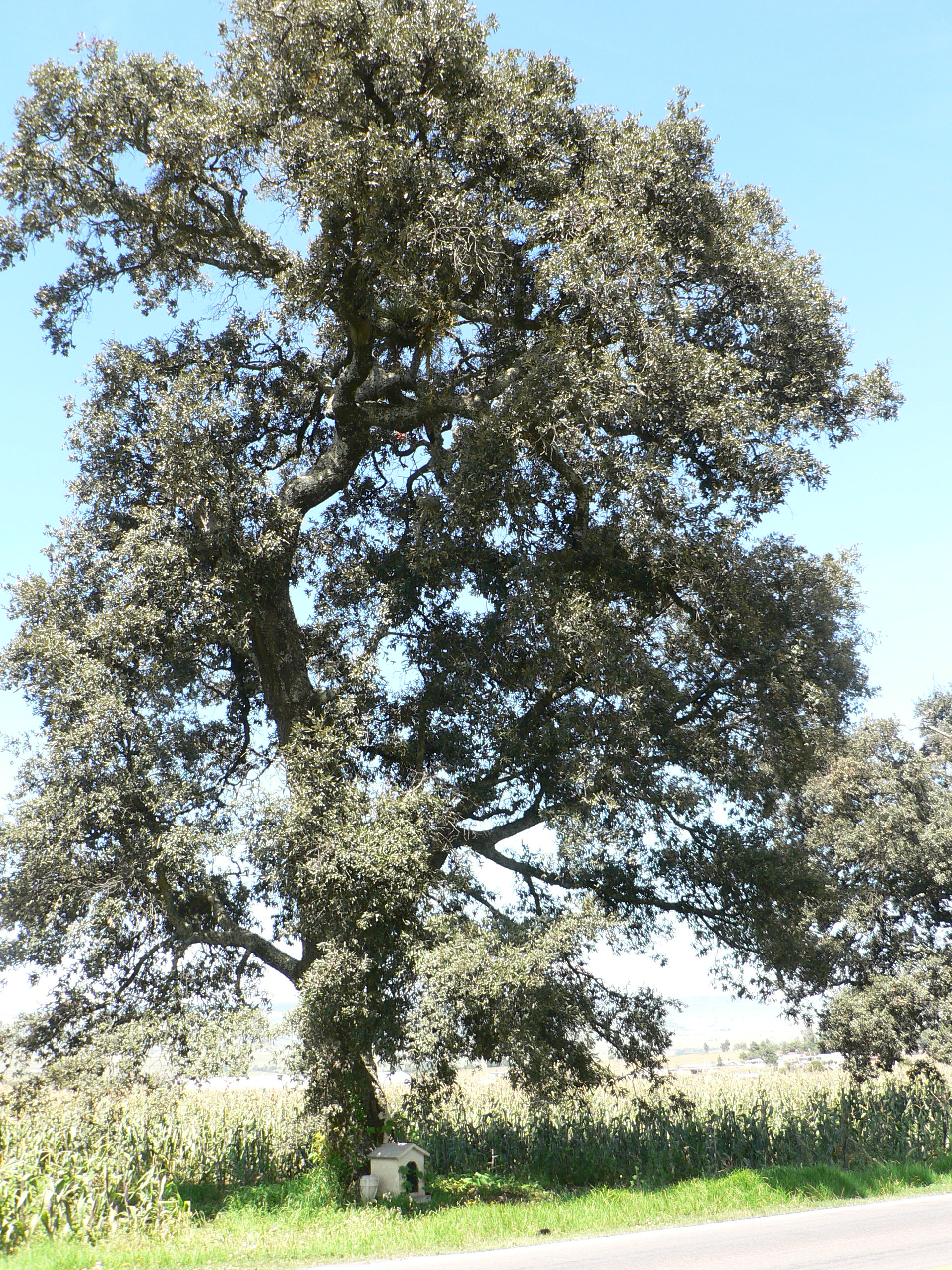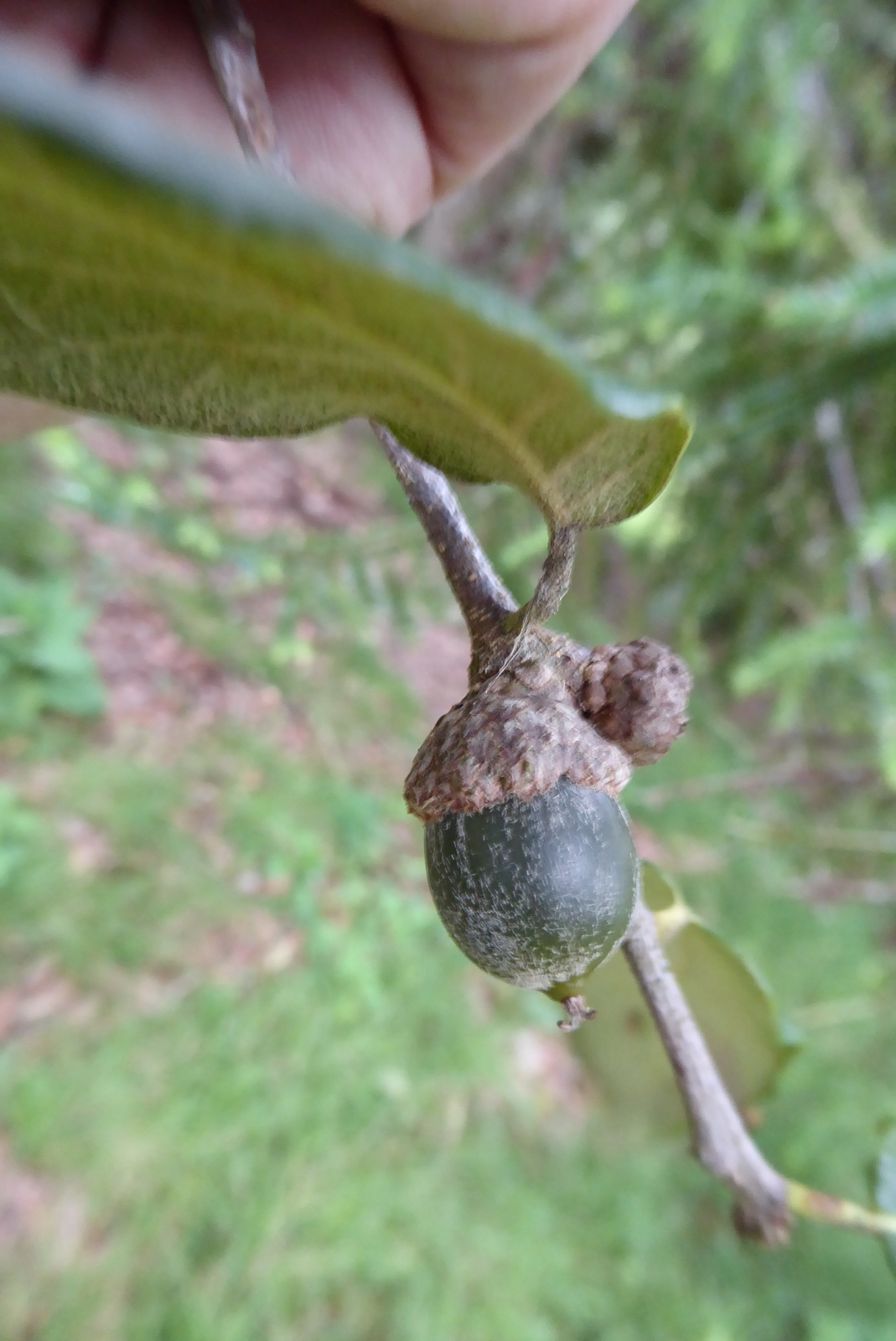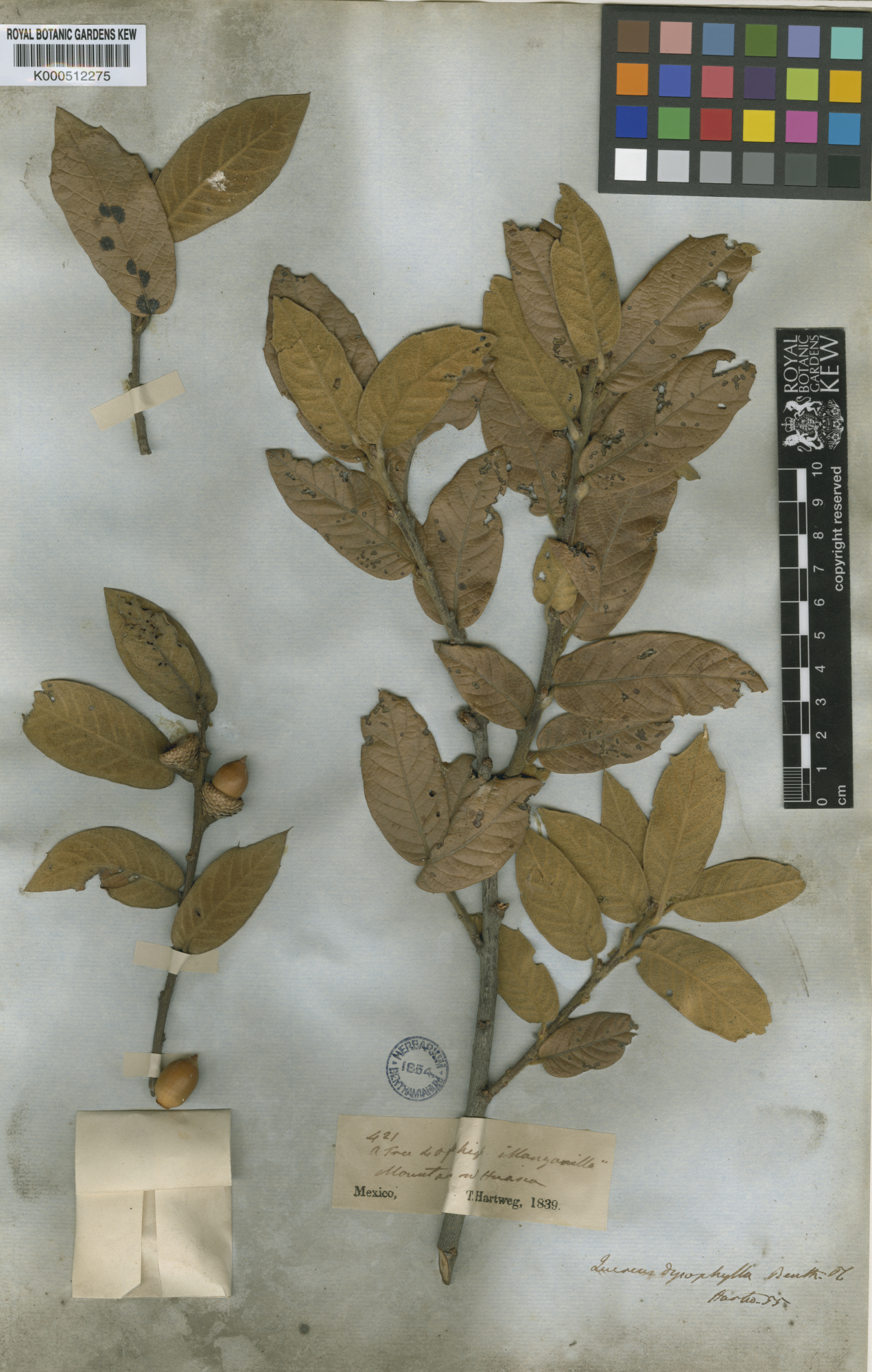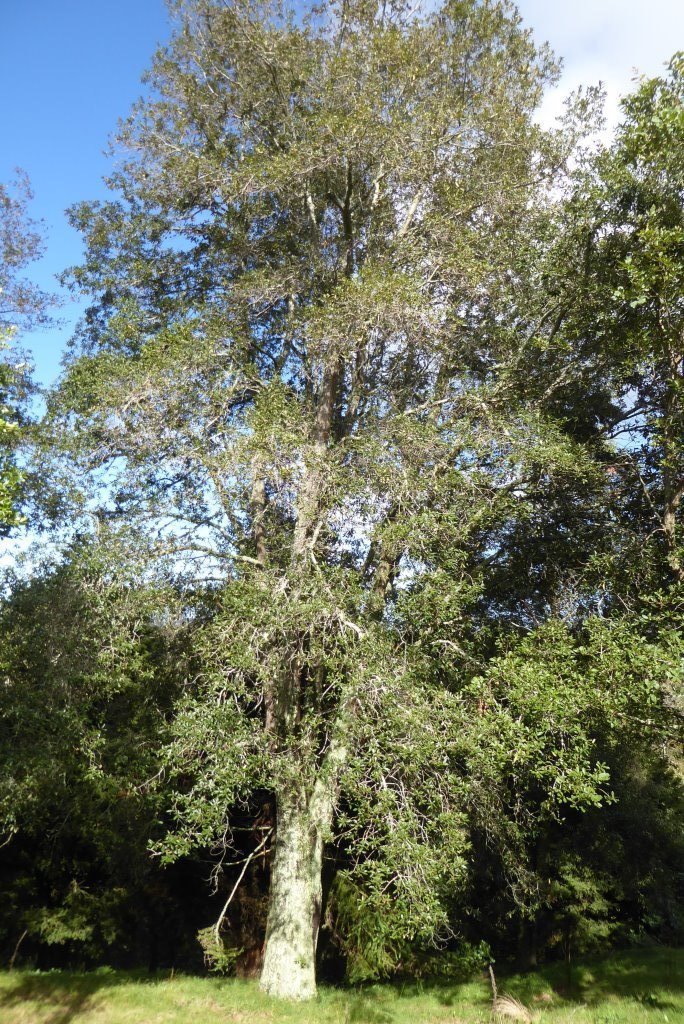Editor's Picks
Plant Focus
Originally described as a species, Quercus ×dysophylla is now considered to be of hybrid origin, the result of the cross between the Mexican Red Oaks Q. crassifolia and Q. crassipes. Some authors still list it as a species, including Beaulieu and Lamant in their Guide Illustré des Chênes, even though they describe it as a “hybride spontané fixé” (fixed spontaneous hybrid) of the two parent species. It is an attractive oak, characterized by shiny, dark green, leathery leaves with yellow tomentose undersides. Its native habitat spans the center, south, and southwest of Mexico, and it can be found where the parent species grow together, and sometimes where only one of them is present. It is a relatively common oak and it has been widely collected. Many specimens exist in herbaria and it is found in several oak collections around the world.

It is a medium-sized deciduous tree, between 5 and 10 m high, sometimes reaching 20 m. The thick, glossy leaves are quite variable in shape and mostly similar to Q. crassipes: ovate, lanceolate, or elliptic, with a rounded or cordate base—but they are broader and more densely hairy beneath. They generally have entire margins, but sometimes they sport 1-3 pairs of aristate teeth in the top third of the leaf. The bark is gray to dark gray and at first smooth, becoming scaly as it ages. The cupule is hemispherical or slightly turbinate, with imbricate, loosely appressed scales, and encloses half the acorn. There seems to be disagreement as to whether the acorns mature annually or biennially, and some sources state they can ripen in one or two years. They occur singly or in pairs. Flowering occurs in March-May and acorns drop in July-October (northern hemisphere).

There are some key characteristics that distinguish Q. ×dysophylla from its parent species. Whereas Q. crassifolia’s leaves are mostly obovate (base narrower than tip) and toothed, Q. ×dysophylla’s are broader at the base or taper at both ends, generally have smooth margins, and are borne on short petioles. To tell the hybrid apart from Q. crassipes, examine the undersides: the tomentum is thicker and yellow or coffee-colored in Q. ×dysophylla, as compared to pale yellow or whitish in Q. crassipes.

Quercus dysophylla was originally named as a species by George Bentham in 1840, based on a dried specimen sent back from Mexico by Karl Theodor Hartweg, a German botanist contracted to collect in that country by the London Horticultural Society. The epithet dysophylla is formed from the Greek suffix dys, meaning abnormal, odd, or bad, the opposite of eu as in eulogy (think dysfunctional, dystopia—not to be confused with the Latin prefix dis, meaning opposite, as in disrespect) and phylla, meaning leaf. The “o” in between is simply a connecting vowel and presumably should not be stressed in pronunciation. It is not clear why Bentham chose to “dys” the leaves of the new species he was describing. Perhaps he was referring to the variable shape of the leaf, as mentioned above. The specimen provided by Hartweg, now stored at Kew, does show some leaves with a tooth on either side. On the other hand, Bentham seems to have had a preference for this epithet, originally coined by Blume to name a genus in 1826: there are eight published plant names with the epithet dysophylla, all of them named by Bentham.

Suspicion that the species was of hybrid origin began to emerge in the 1990s, based on field observations, morphology, and distribution. In her undergraduate thesis on Quercus in the State of Puebla, Mexico, presented in 1992, Lucía Vázquez pointed out that Q. dysophylla had characteristics similar to Q. crassifolia and Q. crassipes: some specimens had elliptic leaves similar to Q. crassipes, but with pubescent undersides similar to Q. crassifolia; others looked like Q. crassifolia but with entire margins, not toothed. Mapping of the distribution of Q. dysophylla shows that it occurs in the same locations as its putative parents. Finally, molecular analyses by EfraínTovar Sánchez and Ken Oyama published in 2004 drove the nail in the coffin of Q. dysophylla as a species name, concluding that it “does not deserve the status of species.” Most sources now list it as Q. ×dysophylla, though it is still described as a species in Silvia Romero Rangel’s Encinos de México, published in 2015.

Mexican hybrids in general do not have a distinct name, but are rather referred to as the cross between the parent species. The few that have their own name also began nomenclatural life as a species. Given the complexity of oak diversity in Mexico, perhaps we should be thankful that taxonomists have refrained from naming hybrids.
Quercus ×dysophylla did not enter cultivation in Europe till over a century and a half after Hartweg shipped his dried specimen to London. Allen Coombes introduced seed to collections in the UK in 1995. Bob Berry had already collected Q. ×dysophylla in Mexico in 1984 and planted the trees at his Hackfalls Arboretum in New Zealand. Other European collections have trees from acorns collected before and after the 2009 IOS Conference in Puebla, Mexico. This oak appears to prosper in cultivation: a specimen in Hackfalls was measured at 16 m tall at 20 years, with a DBH of 70 cm; one in Sir Harold Hillier Gardens in the UK was 12.3 m tall × 23 cm DBH at 18 years; at Chevithorne Barton a tree reached 5 m in 7 years, having been planted as an 80-cm seedling.
Relegating (or exalting, depending on your point of view) its name from species to hybrid has of course had no effect on the beauty of this oak, and it will surely continue to be sought after by collectors and enthusiasts. So don’t be put off by the dysparaging epithet—think of it rather as dystinguished.

Further Reading
Amory, Michael Heathcoat. The Oaks of Chevithorne Barton. London: Adelphi, 2009.
Beaulieu, Antoine le Hardÿ de, and Thierry Lamant. Guide Illustré Des Chênes. Paris: Éditions du 8ème, 2006.
Bentham, George. Plantas Hartwegianas: Imprimis Mexicanas Adjectis Nonnullis Grahamianis. G. Pamplin, 1839.
http://oaks.of.the.world.free.fr/. Accessed January 19, 2016.
http://www.oaknames.org/. Accessed January 19, 2016.
Romero Rangel, S., E.C. Rojas Zenteno, and M. de L. Aguilar Enriquez. El Género Quercus (Fagaceae) en el Estado de México, Annals of the Missouri Botanical Garden, Vol. 89, No. 4 (Autumn, 2002), pp. 551-593.
Romero Rangel, S., E.C. Rojas Zenteno, and L.E. Rubio Licona. Encinos de México. Mexico City: Universidad Nacional Autónoma de México, 2015.
Tovar-Sanchez, E., and K. Oyama. “Natural Hybridization and Hybrid Zones between Quercus crassifolia and Quercus crassipes (Fagaceae) in Mexico: Morphological and Molecular Evidence.” American Journal of Botany, vol. 91, no. 9, 2004, pp. 1352–1363., doi:10.3732/ajb.91.9.1352.
Valencia-A., Susana. “Diversidad Del Género Quercus (Fagaceae) En México.” Botanical Sciences, no. 75, 2017, p. 33., doi:10.17129/botsci.1692.
Vázquez, M. Lucía. 1992. El género Quercus en el estado de Puebla, México. Undergraduate thesis. Universidad Nacional Autónoma de México. 246 pp.
Vázquez, M. Lucía, and Kevin C. Nixon. “Taxonomy of Quercus crassifolia (Fagaceae) and Morphologically Similar Species in Mexico.” Brittonia, vol. 65, no. 2, 2013, pp. 208–227., doi:10.1007/s12228-012-9270-0.















